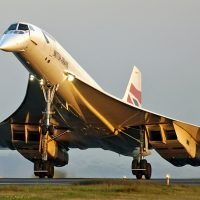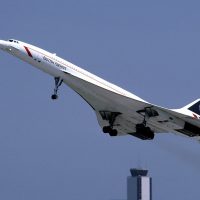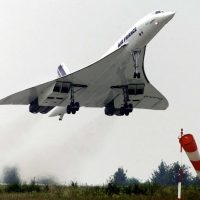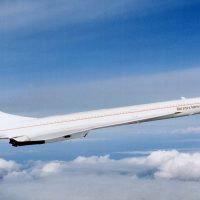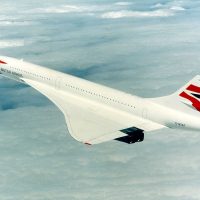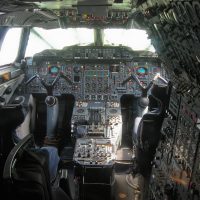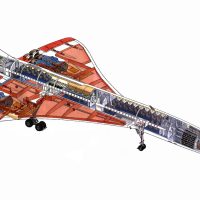
How fast was Concorde
At heights of up to 60,000 feet (over 18,000 meters), the Concorde cruised at around 1,350 mph (2,170 km/hr) more than twice the speed of sound. It could make the trip from London to New York in less than three-and-a-half hours, cutting the time of a typical flight in half. With the five-hour time difference, in local time, the Concorde would land before it took off. A British Airways Concorde made the fastest Atlantic crossing, flying from New York to London in two hours and 53 minutes. On January 21, 1976, Concorde jet planes took off simultaneously from London Heathrow Airport and Orly Airport outside Paris, in the first commercial supersonic flights. The Concorde was never a great commercial success, and its first fatal accident caused by a burst tire that ruptured a fuel tank and caused a fire and engine failure resulted in the deaths of 113 people and marked the beginning of the end for the air service. It made its last regular commercial flight on October 24, 2003. Of the twenty aircraft built, 18 are still complete. Many are on display at museums in the United Kingdom, France, the United States, Germany and Barbados.
- Top speed: 1,354 mph
- Number built: 20 (inc. 6 non-commercial aircraft)
- Program cost: £1.3 billion
- National origin: United Kingdom and France
- Produced: 1965–1979
General characteristics
Crew: 3 (2 pilots and 1 flight engineer)
Capacity: 92–120 passengers
(128 in high-density layout)[N 9]
Length: 202 ft 4 in (61.66 m)
Wingspan: 84 ft 0 in (25.6 m)
Height: 40 ft 0 in (12.2 m)
Fuselage internal length: 129 ft 0 in (39.32 m)
Fuselage width: maximum of 9 ft 5 in (2.87 m) external 8 ft 7 in (2.62 m) internal
Fuselage height: maximum of 10 ft 10 in (3.30 m) external 6 ft 5 in (1.96 m) internal)
Wing area: 3,856 ft2 (358.25 m2)
Empty weight: 173,500 lb (78,700 kg)
Useful load: 245,000 lb (111,130 kg)
Maximum fuel load: 210,940 lb (95,680 kg)
Maximum taxiing weight: 412,000 lb (187,000 kg)
Powerplant: 4 × Rolls-Royce/Snecma Olympus 593 Mk 610 Afterburning turbojets
Dry thrust: 32,000 lbf (140 kN) each
Thrust with afterburner: 38,050 lbf (169 kN) each
Performance
Maximum speed: Mach 2.04 (≈1,354 mph, 2,179 km/h, 1,176 knots) at cruise altitude
Cruise speed: Mach 2.02 (≈1,340 mph, 2,158 km/h, 1,164 knots) at cruise altitude
Range: 3,900 nmi (4,488.04 mi, 7,222.8 km)
Service ceiling: 60,000 ft (18,300 m)
Rate of climb: 10,000 ft/min (50.80 m/s)
lift-to-drag: Low speed– 3.94, Approach– 4.35, 250 kn, 10,000 ft– 9.27, Mach 0.94– 11.47, Mach 2.04– 7.14
Fuel consumption: 46.85 lb/mi (13.2 kg/km) operating for maximum range
Thrust/weight: 0.373
Maximum nose tip temperature: 260 °F (130 °C)
Runway requirement (with maximum load): 3,600 m (11,800 ft)

